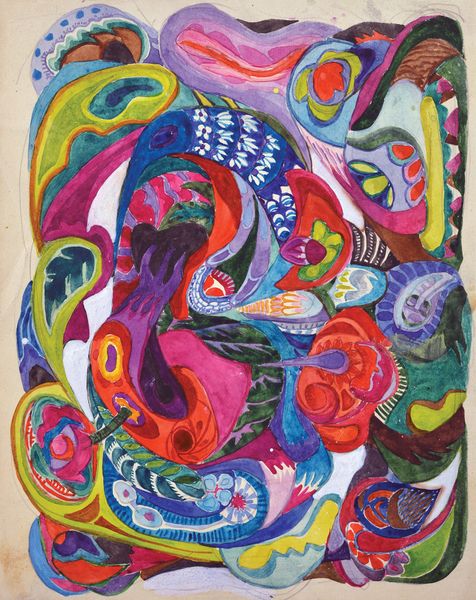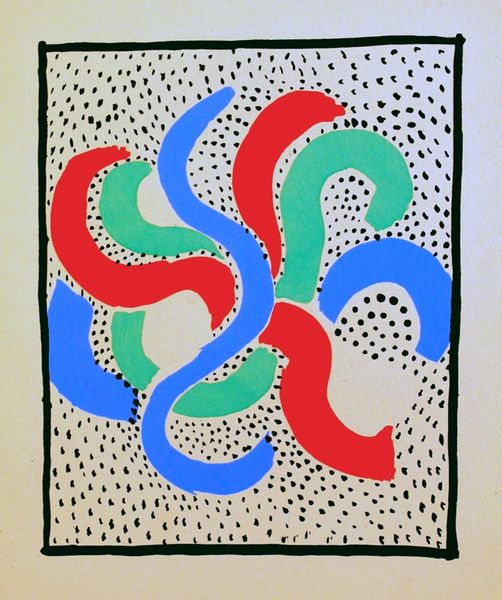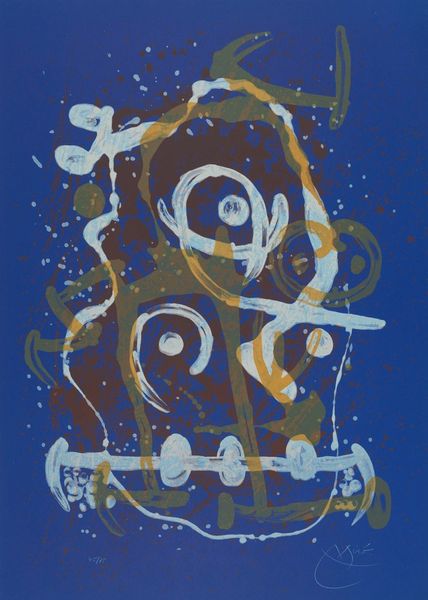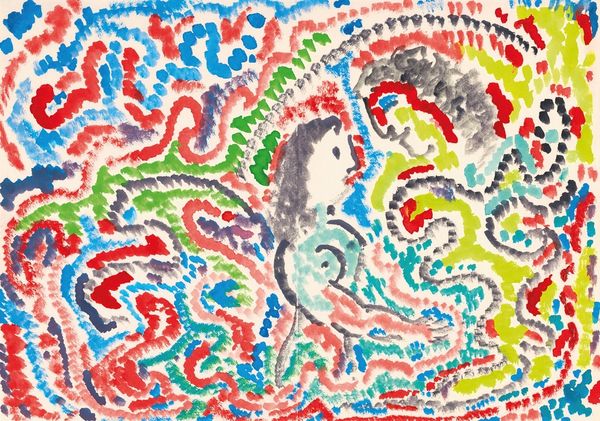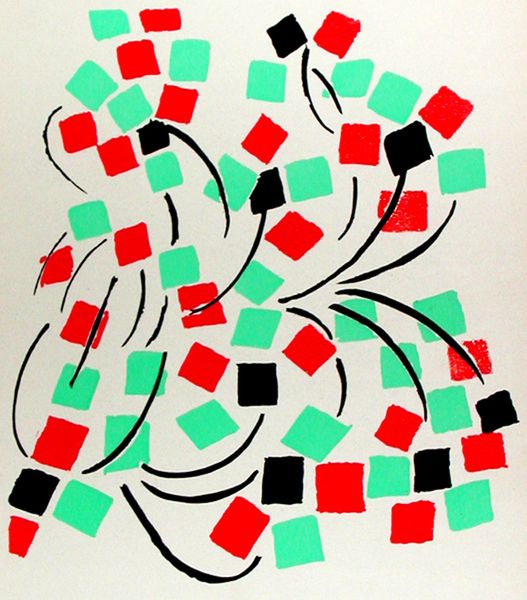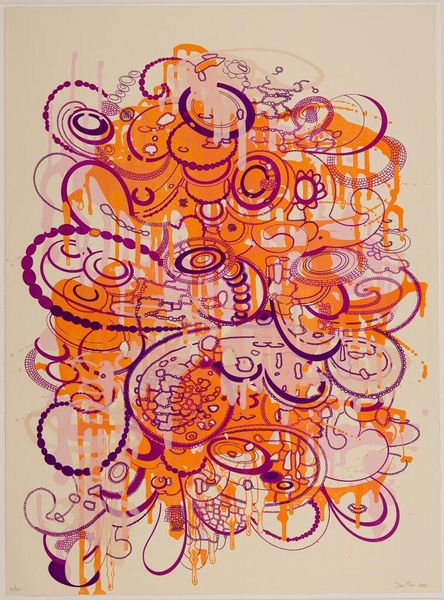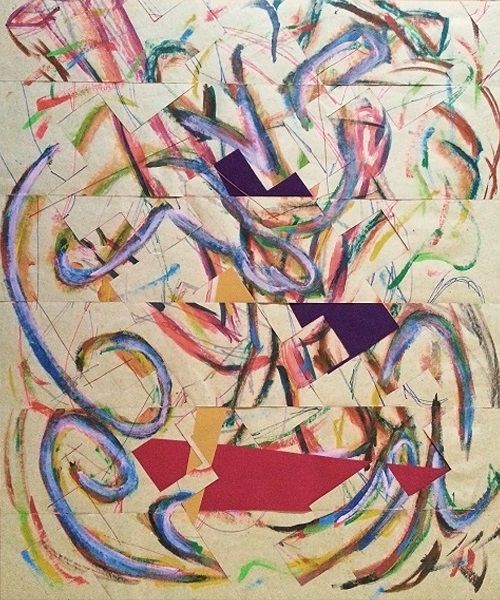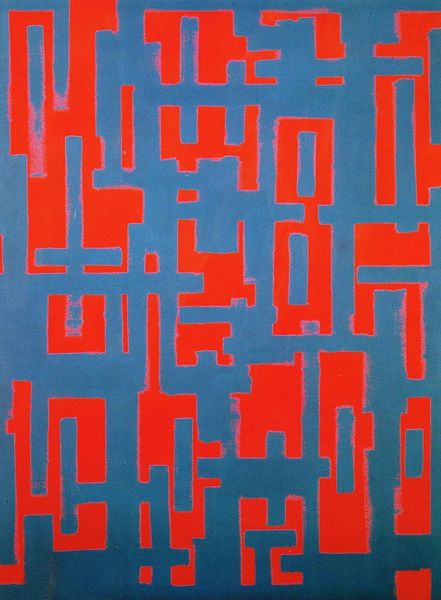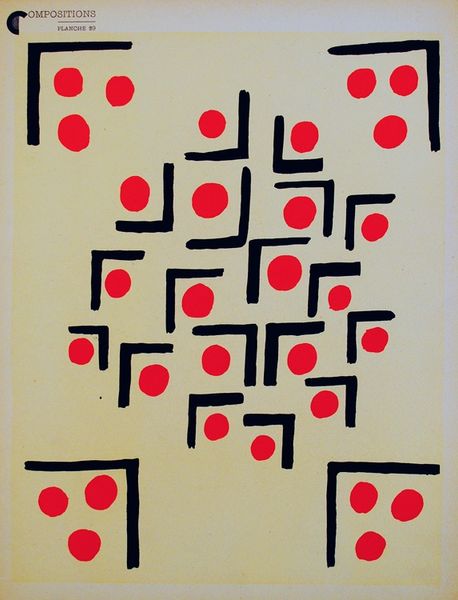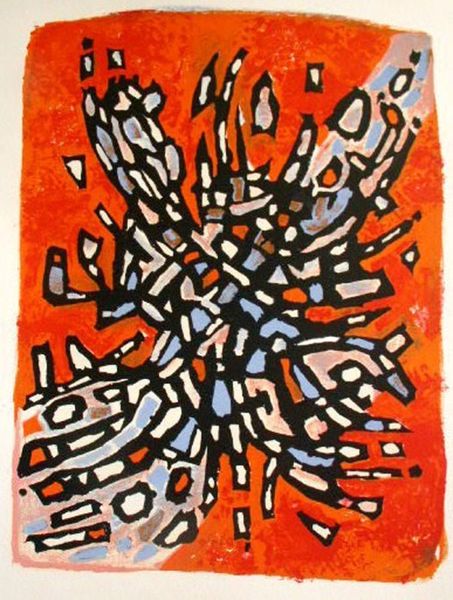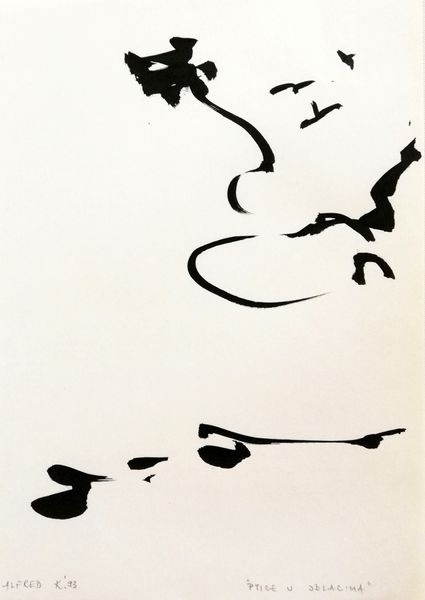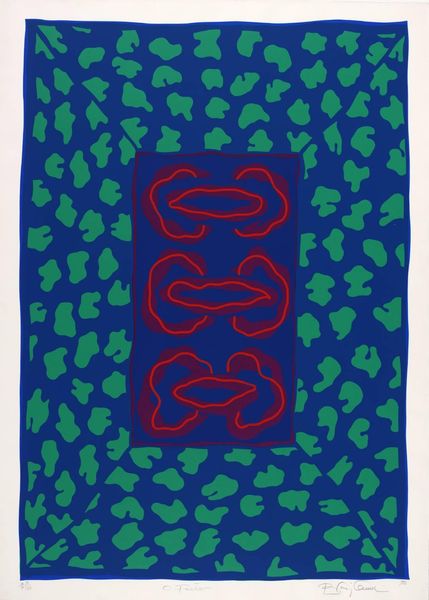
Copyright: Sonia Delaunay,Fair Use
Curator: The Sonia Delaunay work before us, "Composition 10" from 1930, presents a fascinating visual puzzle. Editor: Indeed, the first thing that strikes me is the rhythm of these almost calligraphic marks—loops and hooks in primary colours against a pale ground. It feels both ordered and playful. Curator: Absolutely. Now, considering Delaunay's interest in textiles and applied arts, how does the interplay of pattern and repetition in this work speak to a broader industrial context of design and mass production at the time? Editor: Well, that’s interesting. Formally, it reminds me of musical notation—each element contributing to a visual harmony, a certain lyrical quality with her consistent application of shapes and vibrant colors. It achieves a fascinating visual balance. Curator: Perhaps more interesting is how this piece moves beyond the canvas. Delaunay explored the integration of art into everyday life, producing textiles and designs for fashion, challenging traditional notions of what defines a work of 'high art'. This painting may itself act as a pattern ready to be re-purposed into cloth. Editor: But even separate from function, each chosen colour interacts in compelling ways—the bold primary colors offset by the ground—creating depth despite its fairly simple components. There is, you have to admit, a satisfying harmony that arises, where even a simple pattern becomes almost kinetic. Curator: Kinetic certainly. I’m curious about the materials. Do we know what paints were available in 1930 that allowed for these solid colours? The surface lacks texture; what choices did Delaunay make in application technique? It appears as though it was designed to be re-produced for different media. Editor: The flatness almost transcends the medium. If one didn’t know better, it could even pass for a digital design produced on a computer. Curator: I see this work not merely as a painting, but as a proposal, a schema for rethinking the relationship between art, labor, and consumer culture. The consistent shapes feel machine made; are they not suggesting an embrace of industrialization? Editor: Whether an embrace of industry or not, I agree it proposes a potent aesthetic vision of simplified forms interacting in a controlled visual space. The elegance is undeniable. Curator: So, on reflection, viewing the painting with these processes of design and application of its time allows it to speak even more richly than it does from only its form. Editor: Perhaps in that, then, we meet in the middle—acknowledging how context illuminates but form ultimately communicates. A truly striking piece.
Comments
No comments
Be the first to comment and join the conversation on the ultimate creative platform.
